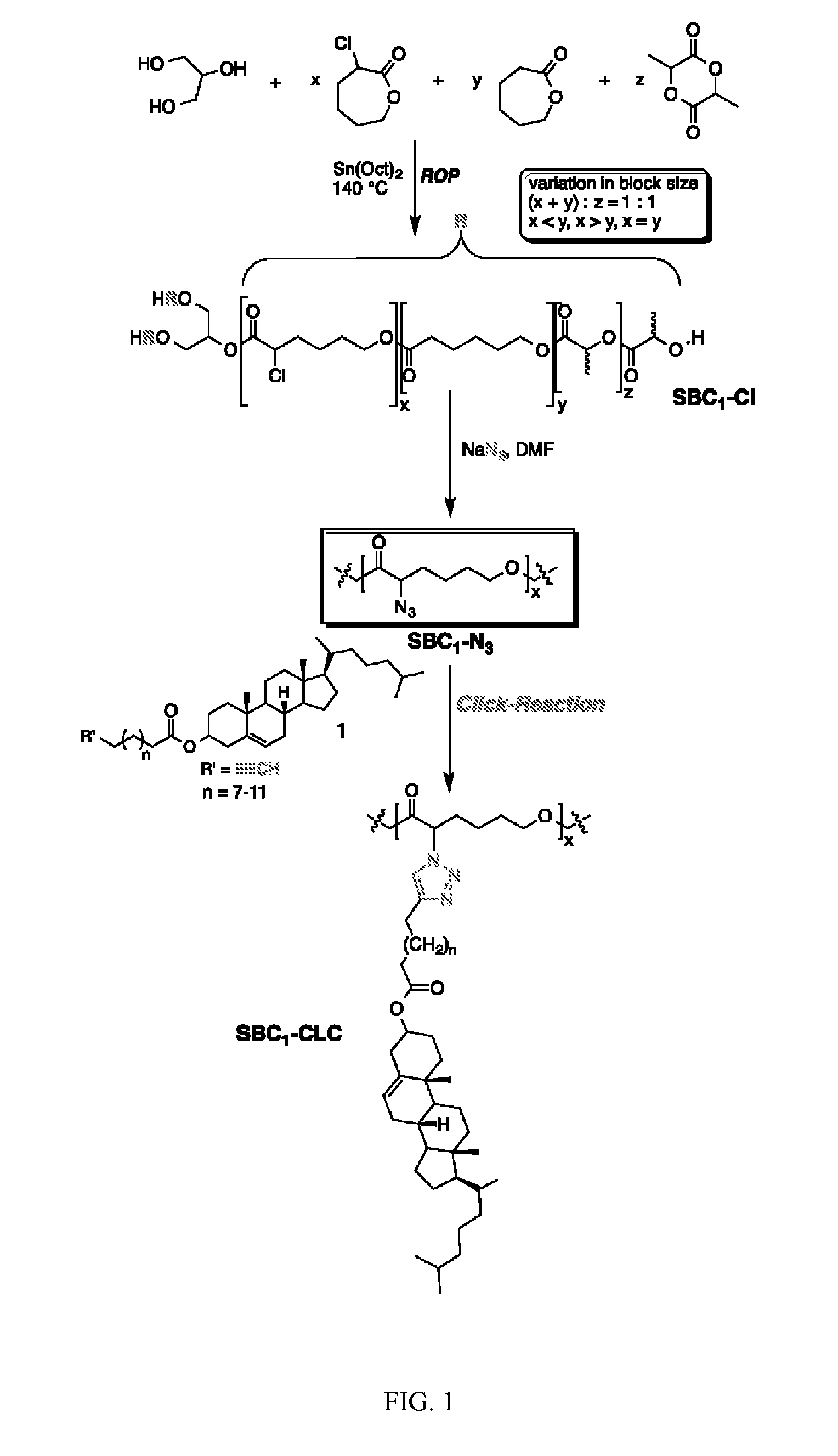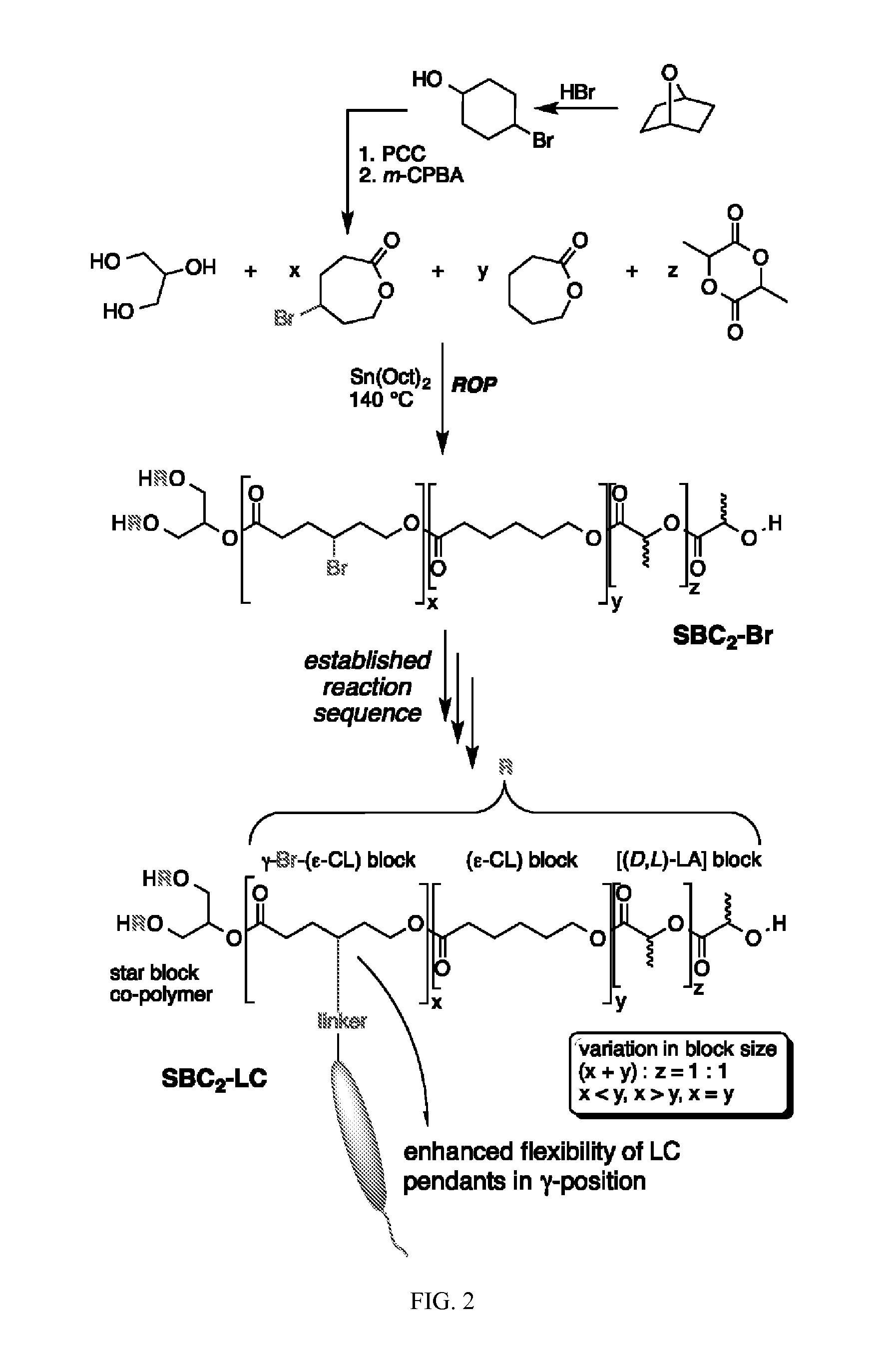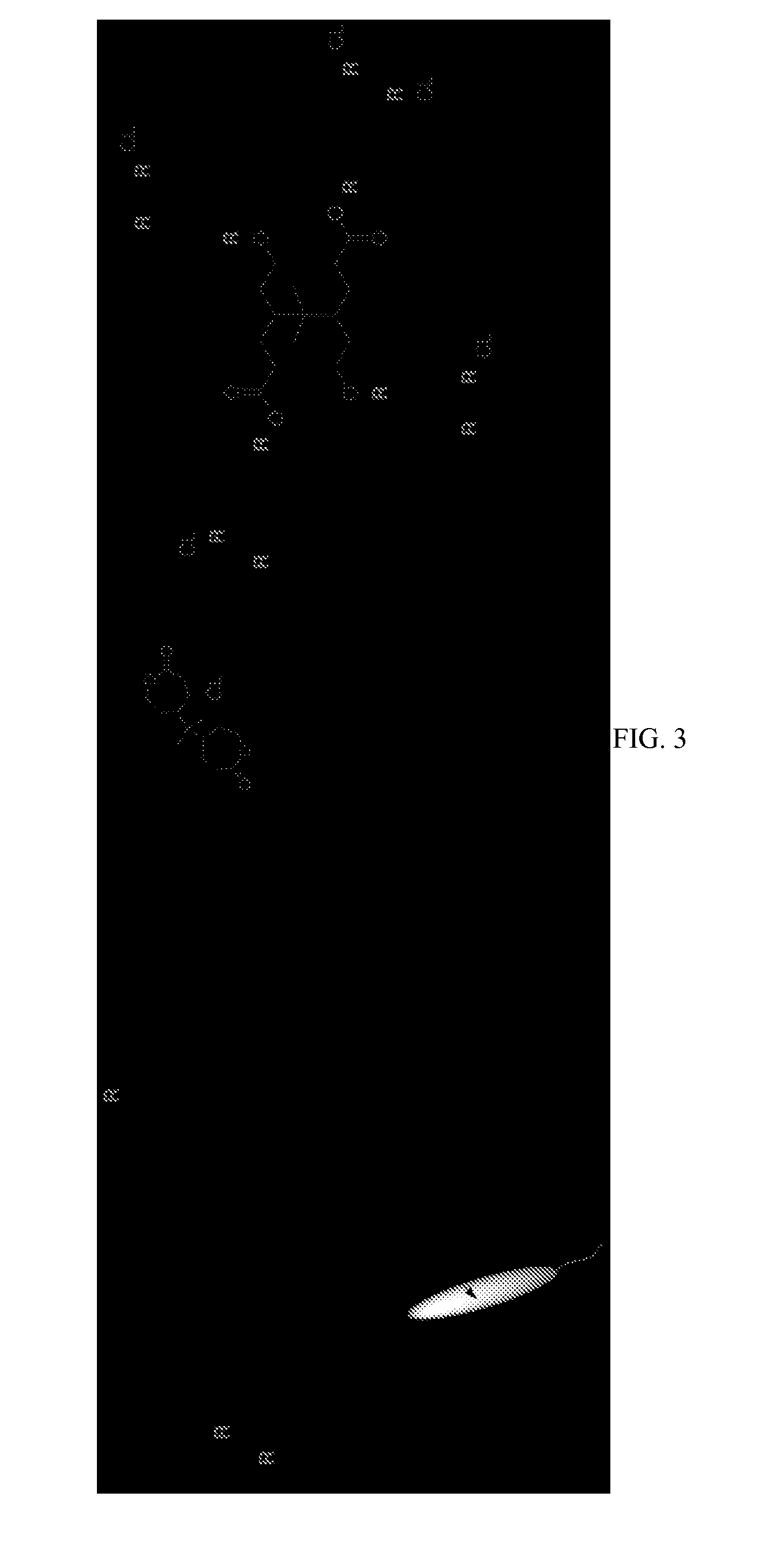Biodegradable side chain liquid crystal elastomers: smart responsive scaffolds (SRS) for tissue regeneration
a biocompatible, side chain technology, applied in the field of biodegradable polymers, biodegradable polymers, tissue engineering, liquid crystals for, can solve the problems of not offering the necessary mechanical support, unable to predict the response of cells, and none of these approaches have demonstrated the use of biocompatible scaffolds, etc., to achieve the effect of increasing order and promoting cell adhesion
- Summary
- Abstract
- Description
- Claims
- Application Information
AI Technical Summary
Benefits of technology
Problems solved by technology
Method used
Image
Examples
examples
Synthesis of Monomers and Preparation of Elastomers
[0031]The synthesis of highly functional liquid crystal elastomers for SRS materials is based on star block copolymers (SBCs) with a glycerol central node, from which arms of random blocks of ε-caprolactone-, α- or γ-substituted ε-caprolactone- and (D,L)-lactide-based polyester units extent (FIGS. 1 and 2).
[0032]α-Cl-ε-CL is prepared following a procedure developed by Jerome et al.14 Briefly, 2-chlorocyclohexanone (10 g, 75.0 mmol) was dissolved in dry dichloromethane (15 mL). The oxidizing agent, meta-chloroperbenzoic acid (m-CPBA) (20 g, 115 mmol), was dissolved in dry dichloromethane (15 mL) and it was added to the 2-chlorocyclohexanone solution. The reaction mixture was stirred under nitrogen for four days. The meta-chlorobenzoic acid (m-CBA) byproduct was precipitated by cooling the reaction mixture at −20° C. for 1 hour. The byproduct was filtered and the remaining solution was washed with saturated solutions of sodium sulfate...
PUM
| Property | Measurement | Unit |
|---|---|---|
| temperature | aaaaa | aaaaa |
| pressure | aaaaa | aaaaa |
| temperature | aaaaa | aaaaa |
Abstract
Description
Claims
Application Information
 Login to View More
Login to View More - R&D
- Intellectual Property
- Life Sciences
- Materials
- Tech Scout
- Unparalleled Data Quality
- Higher Quality Content
- 60% Fewer Hallucinations
Browse by: Latest US Patents, China's latest patents, Technical Efficacy Thesaurus, Application Domain, Technology Topic, Popular Technical Reports.
© 2025 PatSnap. All rights reserved.Legal|Privacy policy|Modern Slavery Act Transparency Statement|Sitemap|About US| Contact US: help@patsnap.com



